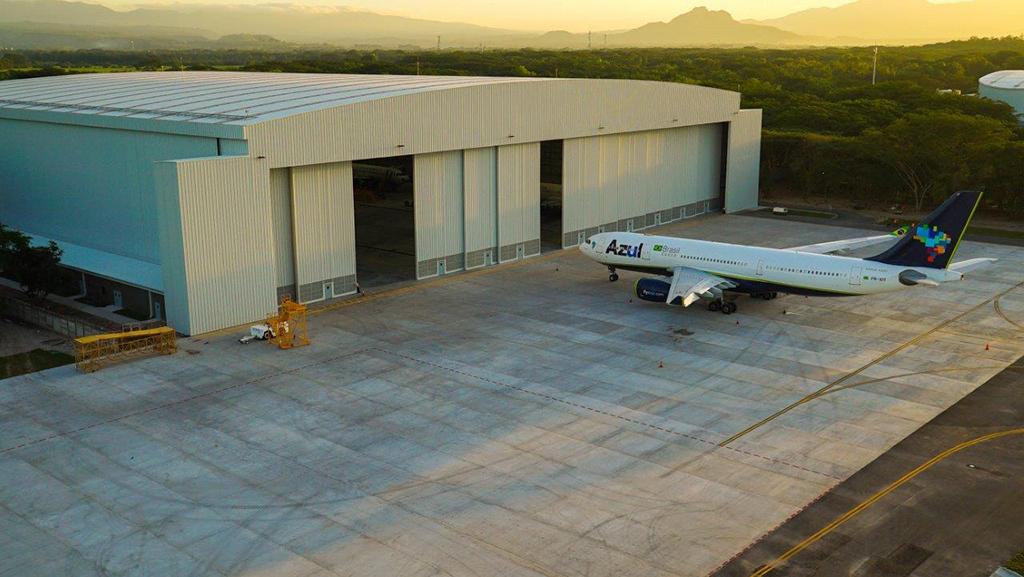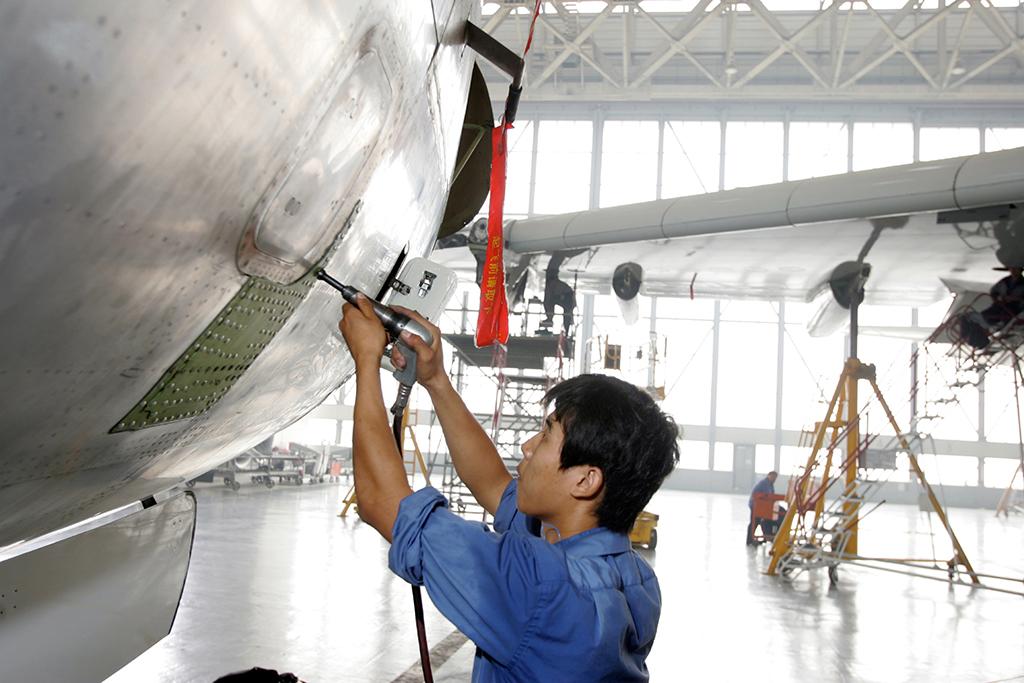
The MRO market didn’t generate the revenue that was predicted. Its mid-single digit growth confounds many. A December RBC Capital Markets report looked at the structural issues impacting the aftermarket, such as increased parting out and introduction of more efficient new aircraft, and concluded supplier’s gross profit could decrease 11%.

Airbus launches A350 support program and eyes large share of pooling-based solution. Vietnam Airlines became the first A350 Flight Hour Services customer. Its 14 A350-900s will be covered by a 12-year contract that includes guaranteed spare parts through a pool service.

Used CFM56 high-pressure turbine blades with falsified records entered the market. General Electric and CFM discovered at least eight sets of blades and filed suspected unapproved parts notices with the FAA. To guard against buying parts with inaccurate histories, consider price and availability. If it’s too good to be true, it probably is.

New and expanded hangars open around the world—including Aeroman’s in San Salvador, Lufthansa Technik’s in Puerto Rico and GMF AeroAsia’s in Jakarta. Aeroman’s Hangar 5 launched the MRO into widebody maintenance. GMF AeroAsia’s Hangar 4 Hangar four, at 6,500 sq. meters, is one of the biggest hangars in the world, and LHT’s one narrowbody line hangar in Aquadilla is scheduled to complete 20 C checks for Spirit Airlines.

Mega-deal mergers occurred—including Berkshire Hathaway’s purchase of Precision Castparts. Expect more to come in 2016.

JetBlue mechanics start using iPads on the line, evidence of the digitization trend. Technicians can look up repair information at the aircraft, as well as track repetitive component defects. JetBlue already has reported a reduction in technical delays.

EasyJet starts inspecting fuselages with drones. It also introduces wearable technology in engineers’ uniforms, which include a built-in video camera for remote diagnostics of technical issues and a microphone for communicating.

The European Commission started examining the competitive landscape for MRO services in the European Union. The regulator says it “is closely monitoring competitive conditions as regards maintenance of engines and components of large commercial aircraft.” As part of the process, the EC sent two questionnaires—one about engines and one about components—to relevant companies to learn more about how they develop maintenance contracts.

Rolls-Royce adjusts its aftermarket to make it more competitive. Its three approved maintenance centers now compete for Trent TotalCare engine overhauls; previously, they were assigned work based on geographic territory. Rolls also added Delta TechOps to its Trent service network.

A broken component and pilot error led to the AirAsia A320 crash on Dec. 28, 2014. Aviation Daily reported that “Indonesia’s National Transportation Safety Committee found that cracking on a solder joint resulted in electrical interruption, which triggering rudder travel limiter unit failures. This was causing master caution activation and electronic centralized aircraft monitoring warnings in the cockpit.”

Ameco Beijing integrates Air China Technics into its business, which takes Air China’s stake to 75% and Lufthansa’s to 25%. Its main base remains in Beijing, but now it has nine branches: in Chengdu, Chongqing, Hangzhou, Tianjin, Hohhot, Shanghai, Guiyang, Wuhan and Guangzhou.

Pratt & Whitney gears up for the PW1100G entry into service—with the goal of having a global open network ready to support operators on Day One. Forty percent of GTF customers are new to Pratt & Whitney. EASA certified A320neo with the engines in November.

The MRO market didn’t generate the revenue that was predicted. Its mid-single digit growth confounds many. A December RBC Capital Markets report looked at the structural issues impacting the aftermarket, such as increased parting out and introduction of more efficient new aircraft, and concluded supplier’s gross profit could decrease 11%.

Airbus launches A350 support program and eyes large share of pooling-based solution. Vietnam Airlines became the first A350 Flight Hour Services customer. Its 14 A350-900s will be covered by a 12-year contract that includes guaranteed spare parts through a pool service.

Used CFM56 high-pressure turbine blades with falsified records entered the market. General Electric and CFM discovered at least eight sets of blades and filed suspected unapproved parts notices with the FAA. To guard against buying parts with inaccurate histories, consider price and availability. If it’s too good to be true, it probably is.

New and expanded hangars open around the world—including Aeroman’s in San Salvador, Lufthansa Technik’s in Puerto Rico and GMF AeroAsia’s in Jakarta. Aeroman’s Hangar 5 launched the MRO into widebody maintenance. GMF AeroAsia’s Hangar 4 Hangar four, at 6,500 sq. meters, is one of the biggest hangars in the world, and LHT’s one narrowbody line hangar in Aquadilla is scheduled to complete 20 C checks for Spirit Airlines.

Mega-deal mergers occurred—including Berkshire Hathaway’s purchase of Precision Castparts. Expect more to come in 2016.

JetBlue mechanics start using iPads on the line, evidence of the digitization trend. Technicians can look up repair information at the aircraft, as well as track repetitive component defects. JetBlue already has reported a reduction in technical delays.

EasyJet starts inspecting fuselages with drones. It also introduces wearable technology in engineers’ uniforms, which include a built-in video camera for remote diagnostics of technical issues and a microphone for communicating.

The European Commission started examining the competitive landscape for MRO services in the European Union. The regulator says it “is closely monitoring competitive conditions as regards maintenance of engines and components of large commercial aircraft.” As part of the process, the EC sent two questionnaires—one about engines and one about components—to relevant companies to learn more about how they develop maintenance contracts.

Rolls-Royce adjusts its aftermarket to make it more competitive. Its three approved maintenance centers now compete for Trent TotalCare engine overhauls; previously, they were assigned work based on geographic territory. Rolls also added Delta TechOps to its Trent service network.

A broken component and pilot error led to the AirAsia A320 crash on Dec. 28, 2014. Aviation Daily reported that “Indonesia’s National Transportation Safety Committee found that cracking on a solder joint resulted in electrical interruption, which triggering rudder travel limiter unit failures. This was causing master caution activation and electronic centralized aircraft monitoring warnings in the cockpit.”

Ameco Beijing integrates Air China Technics into its business, which takes Air China’s stake to 75% and Lufthansa’s to 25%. Its main base remains in Beijing, but now it has nine branches: in Chengdu, Chongqing, Hangzhou, Tianjin, Hohhot, Shanghai, Guiyang, Wuhan and Guangzhou.

Pratt & Whitney gears up for the PW1100G entry into service—with the goal of having a global open network ready to support operators on Day One. Forty percent of GTF customers are new to Pratt & Whitney. EASA certified A320neo with the engines in November.

The MRO market didn’t generate the revenue that was predicted. Its mid-single digit growth confounds many. A December RBC Capital Markets report looked at the structural issues impacting the aftermarket, such as increased parting out and introduction of more efficient new aircraft, and concluded supplier’s gross profit could decrease 11%.
We review the key highlights of the maintenance, repair and overhaul market in 2015, including mega-mergers and new technologies.












